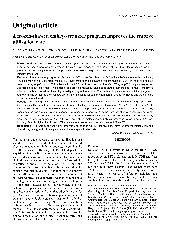摘要
Background Frozen-thawed embryo transfer (FET) is the most common way to prevent serious late ovarian hyperstimulation syndrome and increase the cumulative pregnancy rate. We evaluated the effectiveness of an FET program for improving the embryo implantation and clinical pregnancy rates, and ultimate embryo utilization rate in infertility treatment. @@@ Methods Patients undergoing in vitro fertilisation (IVF) cycles from January 2006 to June 2008 were enrolled, including 179 patients who had undergone the first FET cycle after controlled ovarian hyperstimulation (CON) in which all embryos were frozen (group C1) and 1306 patients who had COH with fresh embryo transfer (ET) (group T1). Logistic regression was used to model the embryo implantation and clinical pregnancy rates based on the mother's age, numbers of oocytes retrieved, embryos transferred and high-quality embryos transferred. The embryo implantation and clinical pregnancy rates were also compared between two groups after adjusting for age, the numbers of oocytes retrieved and the numbers of embryos transferred. @@@ Results Logistic regression analysis confirmed that embryo implantation and clinical pregnancy rates in group C1 were both significantly higher than those in group T1 after adjusting for confounding factors (43.6% vs 29.0%, 63.1% vs 47.0%, respectively; P <0.01). The embryo implantation and clinical pregnancy rates were consistently higher in group C1 by comparing the age groups >= 35 or <35 years. The clinical pregnancy rates for the numbers of oocytes retrieved per cycle being >= 15 or <15 were higher in group C1, as was the embryo implantation rate. These differences were statistically significant for oocyte numbers >= 15 (P <0.05). The embryo implantation and clinical pregnancy rates in group C1 were both significantly higher than in group T1 when two or three embryos were transferred (P <0.05). @@@ Conclusion A program of freezing all embryos and performing FET improved the rates of embryo implantation and clinical pregnancy, and ultimately enhanced the embryo utilization rate. Chin Med J 2009;122(17):1974-1978
- 出版日期2009-9-5
- 单位浙江大学
